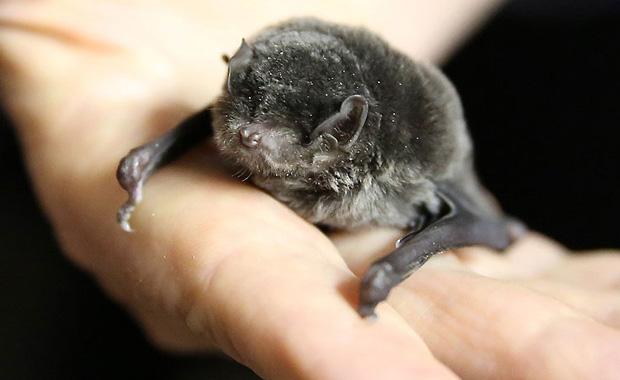Southern bent-wing bat

IUCN status
Not assessed
AUSTRALIAN CONSERVATION STATUS (EPBC Act)
Critically endangered
RANGE
South-east South Australia and western Victoria
HABITAT
Roosts in mines and caves, often near coastal cliffs, particularly the World Heritage-listed Naracoorte Bat Cave in SA
CLASSIFICATION
Kingdom Animalia
Phylum Chordata
Class Mammalia
Order Chiroptera
Family Vespertilionidae
Genus Miniopterus
Species: schreibersii bassanii
THE SOUTHERN BENT-WING Bat is a type of microbat, measuring just 52-58mm long (head and body) and weighing about 15g.
The bent-wing name comes from its unique anatomy – with on the third ‘finger’ of its wing the last bone is four times longer than the middle one, giving a bent appearance.
It has the longest wingspan of the Vespertilionidae family, measuring almost 2.5. times its head/body length.
There are thought to be just under 41,000 bats left, after a population decline of 67 per cent since the 1990s. In the 1960s, the population was around 100,000-200,000.
In the winter months when temperatures drop to just above freezing, the bats go into hibernation in the coolest part of caves.
The bats are insectivorous and use echolocation to find prey at night. They can often catch the prey with their mouths, but they also net prey with their wings or tail and feed themselves mid-flight. They consume more than half their own body weight in insects each night.
Southern bent-wing bats are closely related to two other subspecies, the M.schreibersii orianae found in WA and NT, and the M.schreibersii oceanensis, found along the east coast from QLD to VIC.

The southern bent-wing bat. (Credit: Rick Hammond/Zoos Victoria
Threats to the southern bent-wing bat
Threats to the southern bent-wing bat include climate change and loss of habitat due to land grazing, pesticides and human disturbance of roosting caves. There a no specific causes as to why the population has declined so much in the last two decades.
There is currently no specific recovery plan in action.
More information
Zoos Victoria
Southern bent-wing bat: Dept of Environment




